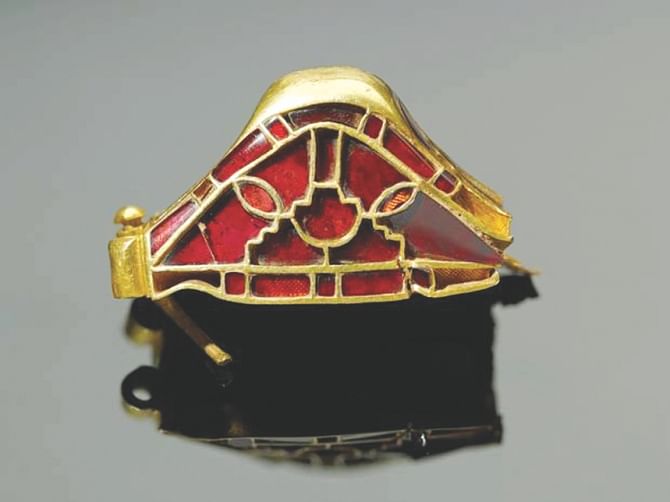All that glitters is not 23-karat gold
All that glitters is not 23-karat gold

Scientists, examining Britain's greatest Anglo-Saxon gold treasure collection, have discovered that it isn't quite as golden as they thought.
Tests on the famous Staffordshire Anglo-Saxon treasure, a vast gold and silver hoard found by a metal detectorist five years ago, have now revealed that the 7th century Anglo-Saxon goldsmiths used sophisticated techniques to make 12-18 karat gold look like 21-23 karat material.
Scientific research, carried out over the past two years on behalf of Birmingham City and Stoke-on-Trent City councils, which jointly own the hoard, has revealed that the Anglo-Saxon goldsmiths had discovered an ingenious way of, metallurgically, dressing mutton up as a lamb.
It appears that they deliberately used a weak acid solution – almost certainly ferric chloride – to remove silver and other non-gold impurities from the top few microns of the surfaces of gold artefacts, thus increasing the surfaces' percentage gold content and therefore improving its appearance.
This piece of Anglo-Saxon high tech deception turned the surfaces of relatively low karat, slightly greenish pale yellow gold/silver alloys into high karat, rich deep yellow, apparently high purity gold.
Archaeologists had never previously realised that Anglo-Saxon goldsmiths had developed such technology.
“We had no idea they were doing it,” said Dr Eleanor Blakelock, a leading British archaeometalurgist who carried out the tests on the Staffordshire hoard gold.
“Previously, we had just done analyses of the surfaces of objects – because we didn't suspect that the Anglo-Saxon goldsmiths were deliberately removing the silver content from the surfaces of gold artefacts,” she said.
Although the goldsmiths often seem to have used the technique to create contrasts between different shades of gold, they also appear to have used it to enhance the apparent purity of gold used by the Anglo-Saxon nobility.
The archaeologists have come to that conclusion by carrying out comparative tests on Anglo-Saxon gold objects, from East Anglia's Sutton Hoo ship burial, which is thought to have been associated with royalty.